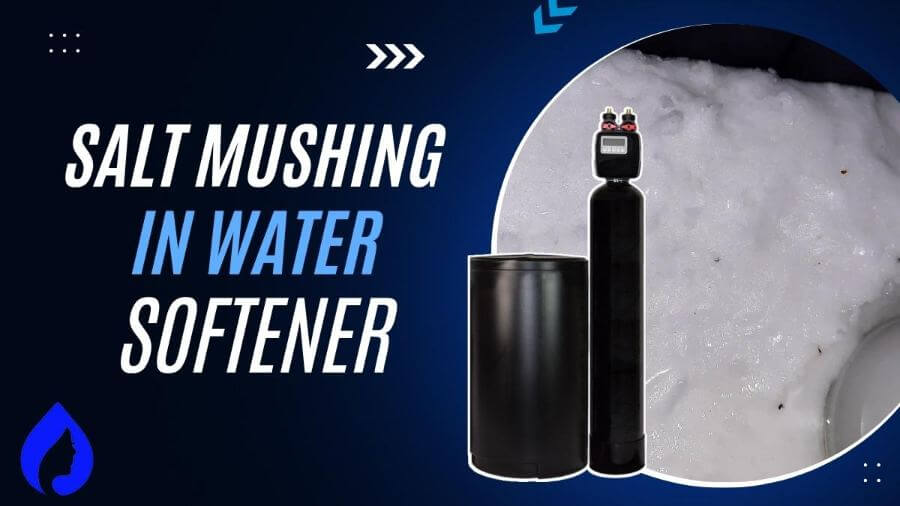
Salt mushing occurs when the dissolved salt recrystallizes and forms small granules that can clog the system and prevent it from working properly, resulting in hard water.
It’s caused when:
You can fix it by scooping out the sludge and cleaning the brine tank to remove the last bit of the mush.
Continue reading for a detailed troubleshooting guide on salt mushing in water softeners.
👉How Do I Know If I Have Salt Mushing in My Water Softener?
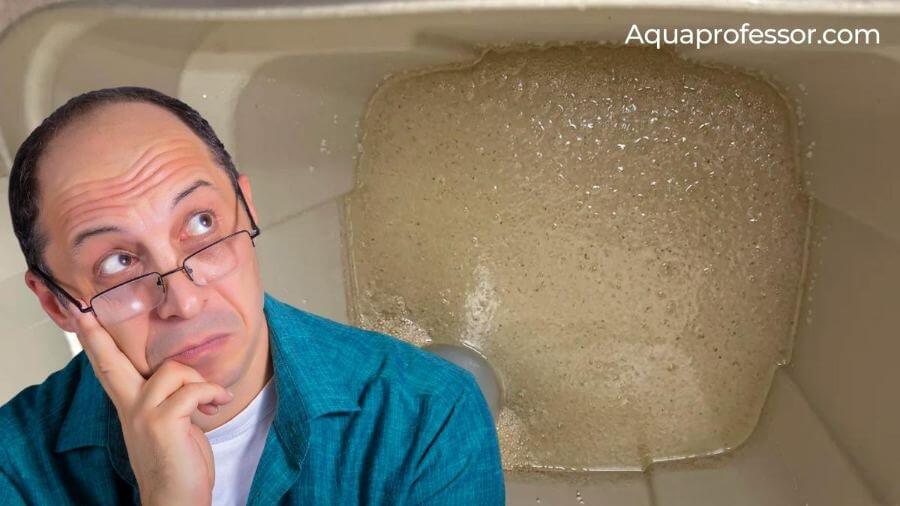
Salt mushing is a common problem that can affect the performance and efficiency of your water softener. Some of the signs and symptoms of salt mushing are:
Also Read: How To Test If Water Softener Is Regenerating?
🤔What Does Water Softener Salt Mush Look Like?
You can easily identify salt mush by looking at your brine solution tank. If you see a layer of moist salt granules at the bottom of the tank, you have a salt mushing problem.
You can also use a wooden stick or a broom handle to poke around the bottom of the salt tank and feel for any resistance or lumps.
🎯Salt Mushing vs. Salt Bridging: What’s The Difference?
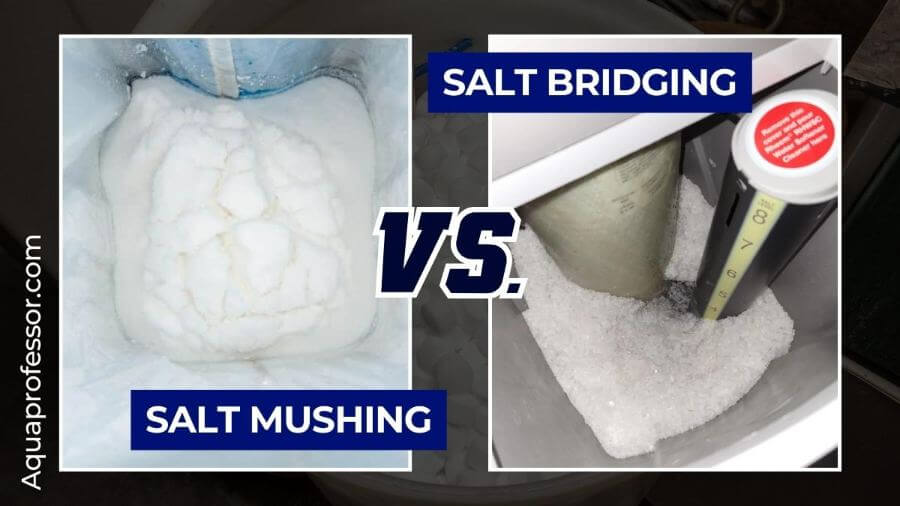
It’s natural to confuse salt mushing and salt bridging, so here’s how to differentiate them:
| Basis | Salt Mushing | Salt Bridging |
| Location | Occurs at the bottom of the brine tank | Occurs at the top of the brine tank |
| Texture | Forms small, soft clumps of salt | Forms a hard crust or dome of salt |
| Reason | Caused by cold water temperature, poor poor-quality salt. | Caused by high humidity, poor quality salt, or overfilling of brine tanks. |
| Solution | Drain the water, and replace the old salt with a high-quality salt | Break the salt bridge using a wooden broom handle |
🧂What Causes Salt Mushing Sludge in a Water Softener?
| Reason | How To Fix |
| Poor Quality Salt | Use high-purity evaporated salt pellets instead of loose salt or low-purity salt. |
| Cold Water Temperature | Increase the water temperature or insulate the brine tank. |
😟Poor Quality Salt
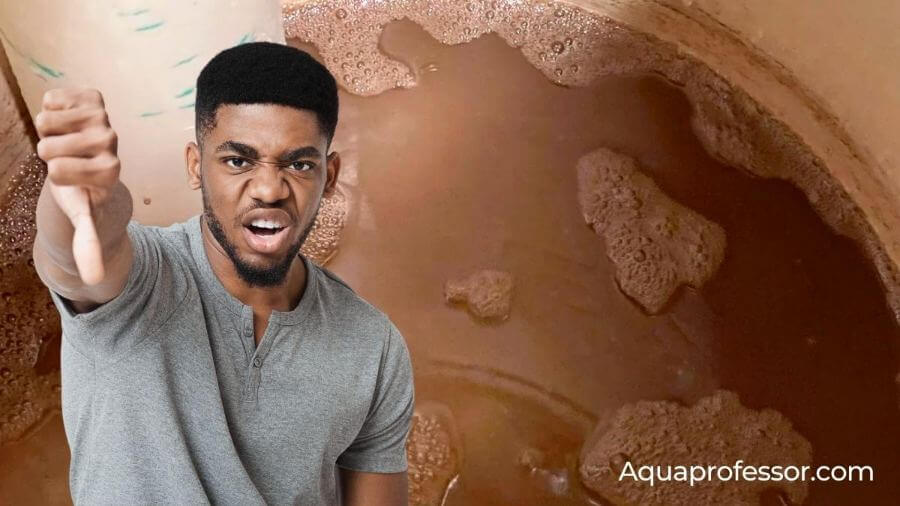
One of the main causes of salt mushing is using the wrong type of salt in your water softener.
The type and quality of salt crystals you use in your water softener can affect how easily it dissolves in water.
Loose salt or low-purity salt can contain impurities that are not water-soluble, which can cause soft salt clumps at the bottom of the tank.
You can easily avoid this by using high-quality salt pellets, which have less impurities and are less likely to recrystallize.
❄️Cold Water Temperature
Another cause of salt mushing is reduced water temperature. Salt is more soluble in warmer water as heat increases the collision of water molecules, allowing them to dissolve salt faster.
So when the water temperature drops, the salt pellets don’t fully dissolve, and salty water can form granules that cause salt mushing.
This problem can occur in freezing temperatures in winter or if you’ve kept your water softener in a cold place, such as a basement or a garage.
Also Read: Do Water Softeners Work Without Salt?
💦How Do You Fix Salt Mushing in a Water Softener?
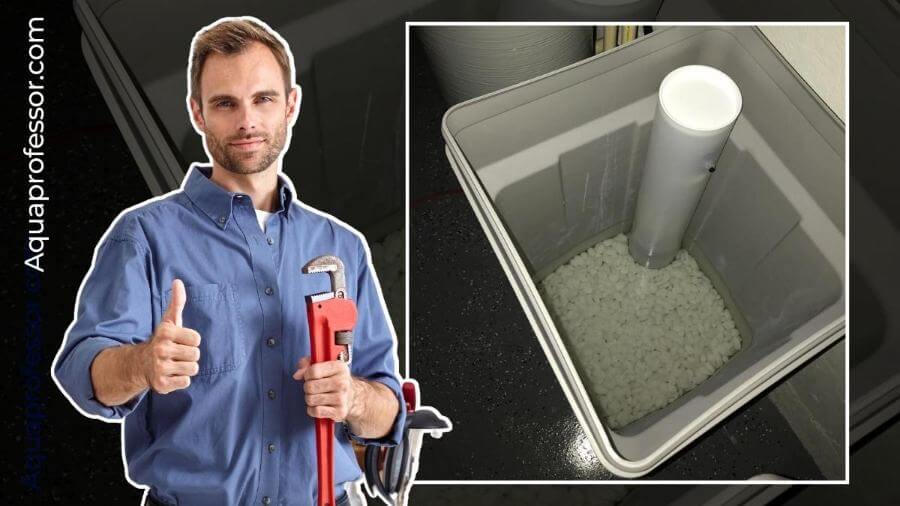
To fix salt mushing in a water softener, remove the salt mush from the soft water brine tank and clean the tank thoroughly. Here are the steps to do that:
Some tips and warnings for fixing salt mushing are:
🥏How to Prevent Salt Mushing in a Water Softener?

To prevent salt mushing in the water softener system, you should follow these tips :
💡Salt Mushing In Water Softener: FAQs
Why does water softener salt turn to mush?
Water softener salt can turn into mush because of the use of poor-quality salt or due to low water temperature.
When low-quality salt crystals are used, they may not dissolve properly. Instead, the salt recrystallizes at the tank’s bottom, leading to salt mush.
Similarly, cold water temperature can hinder salt dissolution, causing salt particles to clump together, resulting in the drinking water in a mushy texture.
Why is my water softener not softening water?
Your water softener may not soften water because salt mushing prevents the ion exchange process from removing hard minerals.
Other possible reasons include low salt level, clogged resin bed, damaged control valve, or incorrect settings.
Why do I see cloudy water after the softener regenerates?
Cloudy water after a softener regenerates can be attributed to excess air, creating air bubbles in the water and making it appear cloudy or milky.
To address excess air, run the faucet until the water clears. For salt-related cloudiness, ensure the brine tank isn’t overfilled and avoid salt mushing, which can introduce too much solar salt into the water and cause cloudiness.
How do you know when your water softener needs to be cleaned?
You can tell when your water softener’s bottom needs to be cleaned by looking for signs such as discolored water, low water pressure, hard water, or foul odor.
These signs indicate that your water softener may have dirt, residue, bacteria, or salt mushing in the tank or the water softener’s resin bed.
Should water be sitting in a water softener?
Yes, water should sit in the softener, but not too much. The ideal water level in the brine tank is about 10 to 12 inches above the salt level.
This ensures enough brine solution for the regeneration process and prevents salt from forming bridges or mushing in the water softener.
Adarsh is a Health & Nutrition Sciences graduate with expertise in environmental health. He is associated with ventures like Glacier Fresh Filter and Simpure Filter Systems. Through Aqua Professor, he intends to provide helpful information to every home to help them make smarter decisions.
